Introduction
Understanding the intricacies of biomass composition and its impact on biofuel production processes is paramount in optimizing renewable energy systems. This article delves into the critical aspects of biomass composition analysis, exploring various feedstocks and their conversion efficiencies. It highlights the importance of advanced analytical techniques like NMR and GC-MS in revealing the structural characteristics of lignocellulosic materials, which significantly influence biofuel yields.
Through a detailed case study, the article showcases how different agricultural residues like corn stover and rice husks perform in bio-oil production, emphasizing the need for precise feedstock selection. Additionally, it addresses the environmental implications of biomass energy systems, stressing sustainable management practices to mitigate greenhouse gas emissions and enhance energy recovery. By examining the challenges and opportunities in biomass energy production, the article underscores the role of integrated biorefineries and innovative technologies in advancing a sustainable bioeconomy.
Importance of Biomass Composition Analysis
Grasping the makeup of organic material is essential for enhancing biofuel creation methods. Different feedstocks, such as wood, agricultural residues, and marine algae, exhibit varying levels of cellulose, hemicellulose, lignin, and extractives, which influence their conversion efficiency to biofuels. For instance, the carbohydrate content significantly affects the yield of fermentable sugars during hydrolysis, while lignin content can hinder enzymatic accessibility. A thorough examination of organic matter composition enables the choice of the most appropriate feedstocks for particular biofuel processes, thus improving overall energy production.
Corn stover, for instance, is a sustainable agricultural waste material that can be effectively utilized in biofuel creation, reducing reliance on fossil fuels and minimizing greenhouse gas emissions. Moreover, sugarcane bagasse has proven to be the most efficient feedstock for integrated gasifier-SOFC systems due to its high power output compared to coal.
Recent advancements also highlight the potential of lignin-first biorefineries, which aim to valorize lignocellulosic organic matter more completely. Innovations in breaking down plant material, such as the novel method developed by the University of California, Riverside, demonstrate that next-generation biofuel production could soon be both economically viable and carbon-neutral.
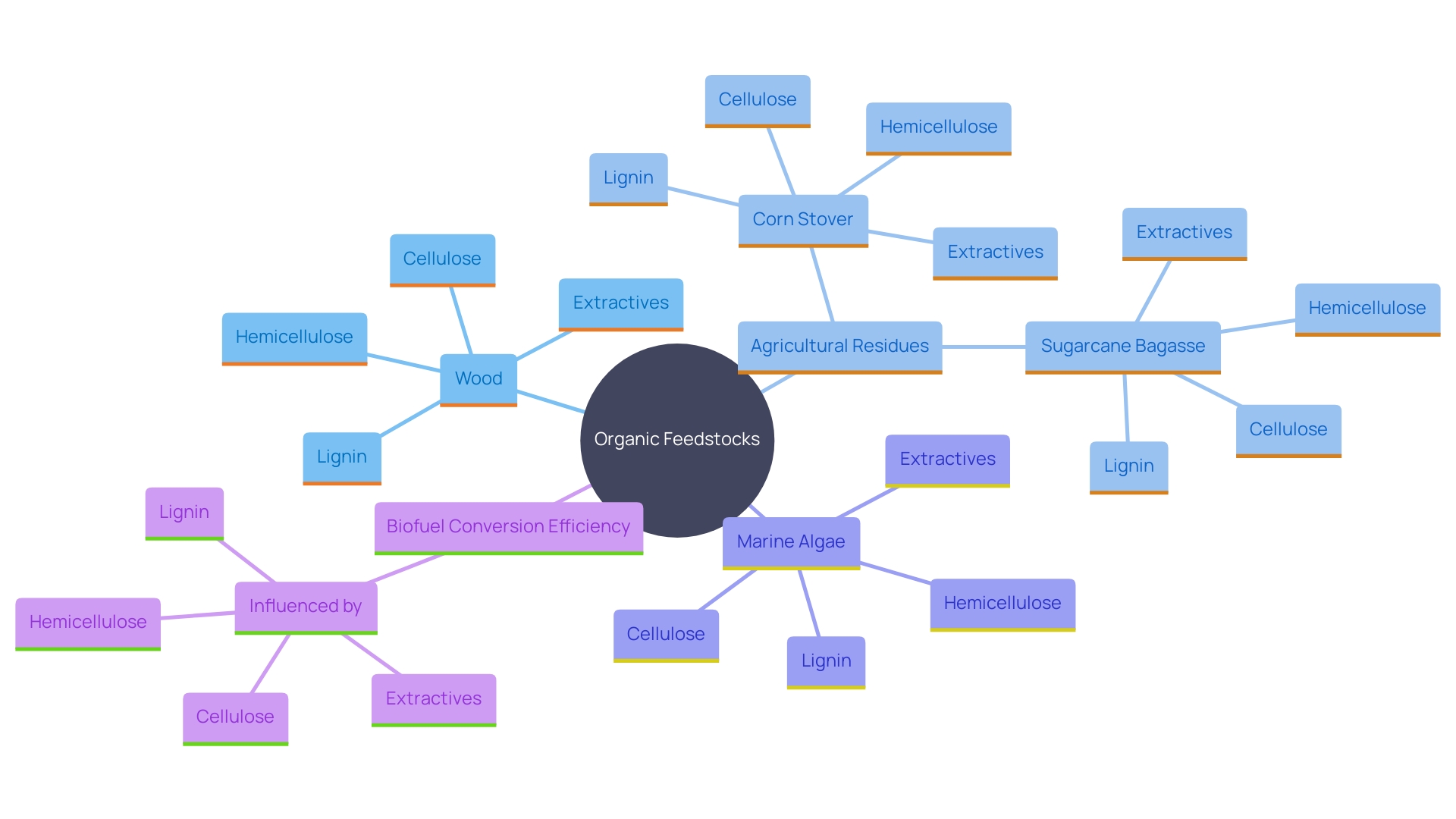
Methods for Biomass Compositional Analysis
Various analytical techniques are employed to determine the composition of organic matter, including proximate and ultimate analysis, nuclear magnetic resonance (NMR) spectroscopy, and gas chromatography-mass spectrometry (GC-MS). Proximate analysis provides information on moisture, ash, volatile matter, and fixed carbon, while ultimate analysis reveals elemental composition (C, H, N, O, S). Advanced techniques such as NMR and GC-MS provide insights into the structural characteristics of lignocellulosic materials, allowing researchers to evaluate the potential of various organic material sources for energy conversion.
NMR spectroscopy is especially beneficial for examining the molecular structure of lignocellulosic materials, offering detailed information about the chemical bonds and functional groups present. This technique enables researchers to comprehend how different pretreatment methods influence the composition and structure of organic material, which is essential for enhancing conversion techniques. GC-MS, in contrast, excels in identifying and quantifying the various volatile compounds released during the thermal breakdown of organic material. 'This information is vital for designing efficient pyrolysis and gasification processes, which are key to converting organic materials into biofuels and biochemicals.'.
The incorporation of these analytical methods into organic matter conversion research has led to significant advancements in the field. For example, the creation of a zero-dimensional mass-transfer-based model has optimized the operating parameters for hydrogen generation from organic matter, maximizing power density. Research has indicated that adjusting operational factors can attain the greatest power density, improving the effectiveness of organic material gasification and subsequent power generation.
Furthermore, the biorefinery framework, which incorporates wastewater management and onsite power production, illustrates the holistic strategy required to use organic materials efficiently. 'Wastewater is processed through anaerobic and aerobic methods, producing biogas that, along with unused organic matter, is utilized to generate process steam and electricity.'. This closed-loop system not only maximizes energy recovery but also ensures sustainable and environmentally friendly organic material utilization.
In conclusion, the application of advanced analytical techniques such as NMR and GC-MS is transforming organic matter conversion technologies, making them more efficient and sustainable. These methods offer essential insights into organic matter composition and structure, driving innovations that pave the way for a cleaner, bio-based economy.
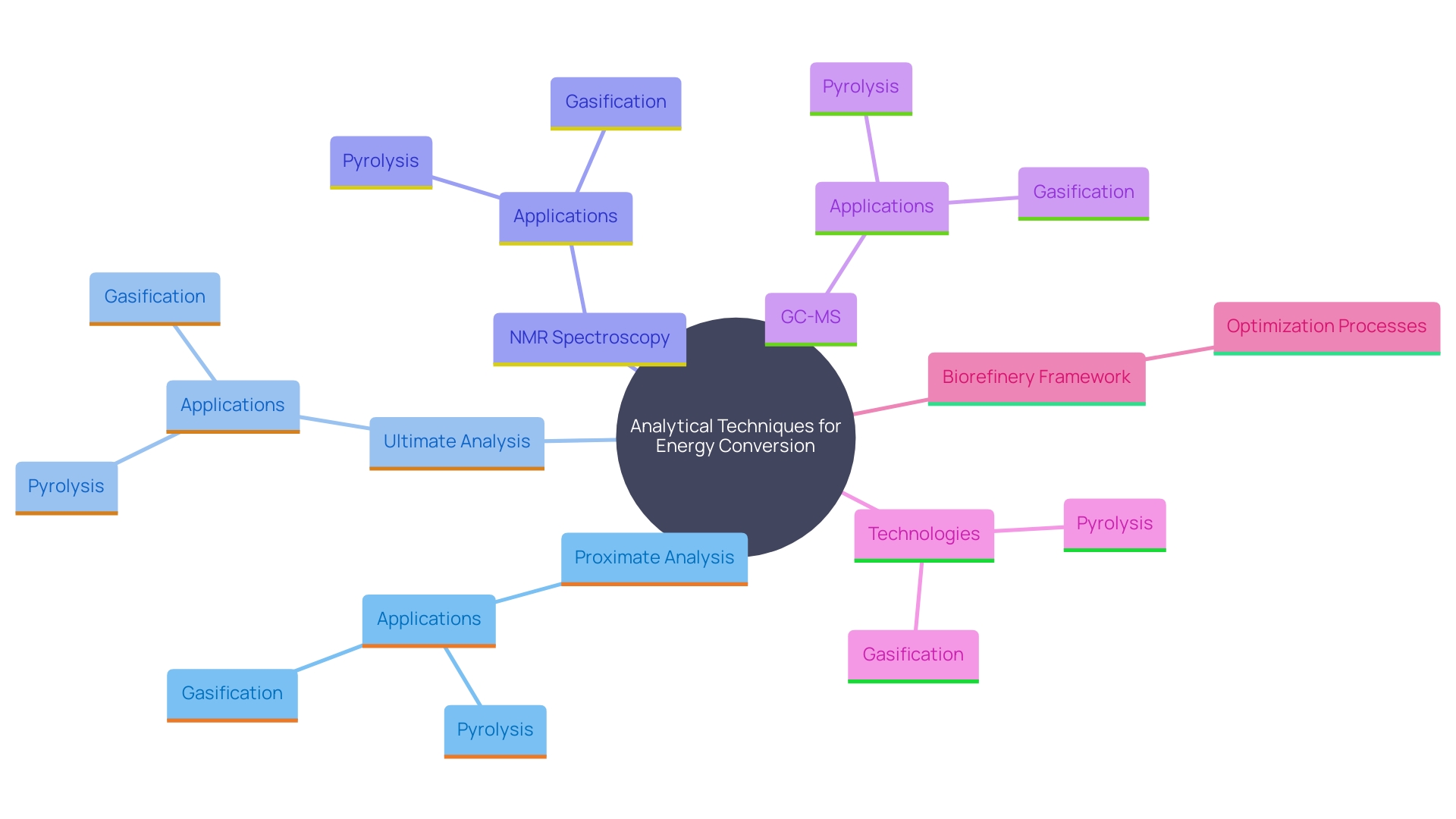
Case Study: Characterization of Selected Biomass for Bio-Oil Production
A comprehensive study was conducted to evaluate the organic material composition of various agricultural residues such as corn stover, wheat straw, and rice husks for bio-oil production through pyrolysis. The findings revealed that corn stover, with its higher cellulose content, produced a significantly larger fraction of bio-oil compared to rice husks, which are richer in lignin. Moreover, the mineral content in the organic matter influenced the pyrolysis temperature and the quality of the bio-oil produced. These results highlight the critical importance of selecting suitable feedstocks based on their compositional characteristics to optimize bio-oil yields. As the demand for sustainable power sources increases, understanding these variations can significantly enhance the efficiency of biorefineries, which play a vital role in transforming agricultural waste into valuable biofuels and reducing greenhouse gas emissions.
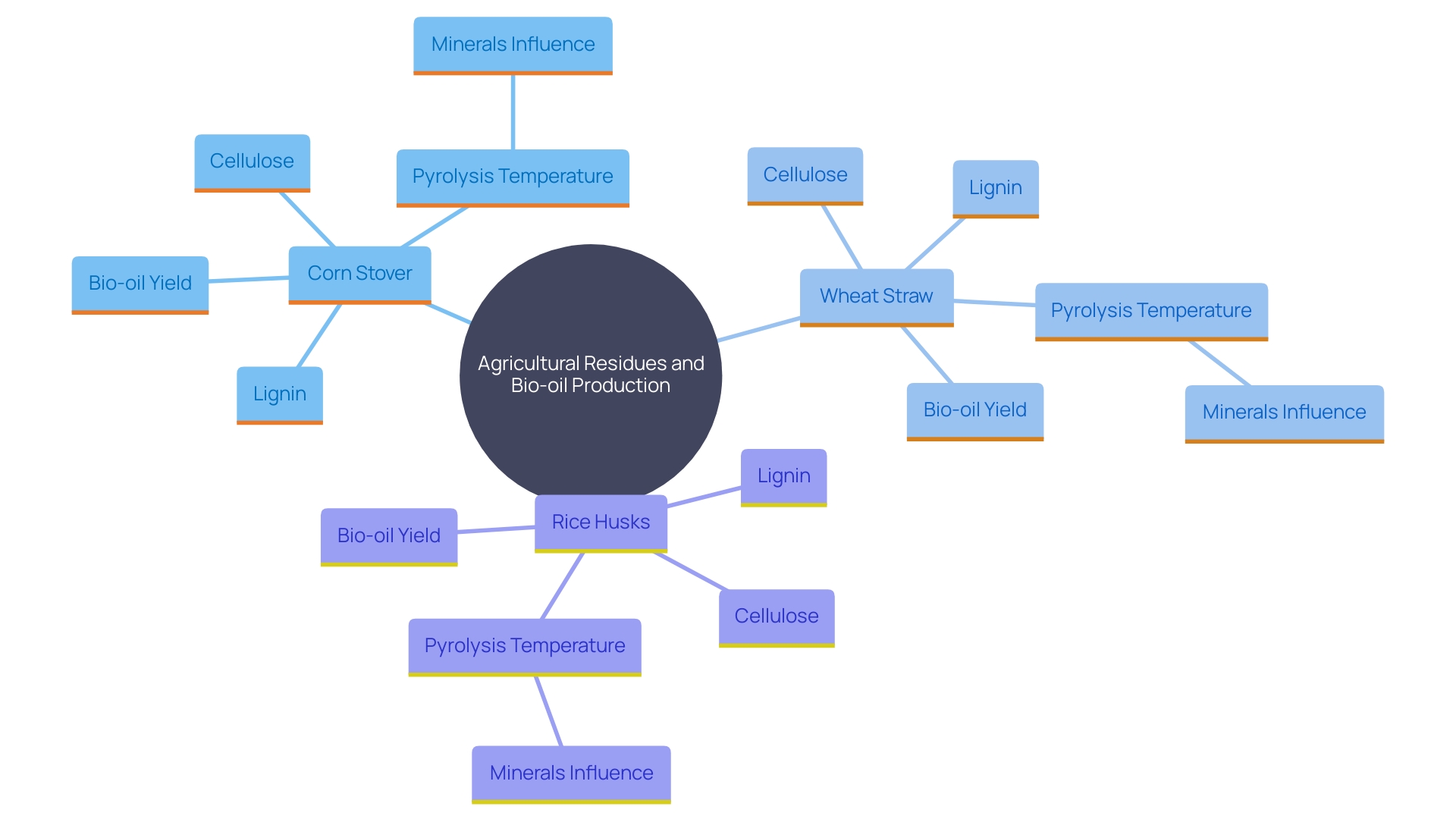
Environmental Impact of Biomass Energy Systems
The ecological consequences of biological material power systems are complex. Life Cycle Assessments (LCA) have been utilized to assess the greenhouse gas emissions, power inputs, and possible land-use changes linked to different organic feedstocks. For instance, LCA studies have shown that utilizing agricultural waste, such as corn stover, for biofuel production can lead to a reduction in overall carbon emissions compared to fossil fuels. Organic material represented over fifty percent of the total renewable gross final energy usage in the EU during 2021, with a notable rise in the application of solid organic material, especially woody organic material, to generate bioenergy. However, the sustainability of organic material sourcing practices is critical, as unsustainable harvesting can lead to soil degradation and loss of biodiversity. Scientific research indicates that not enough EU-sourced organic material will be available to fulfill all the envisaged roles in the European Green Deal in the future, with supply limited by land area, vegetation growth, changing climate, and global trade. This highlights the significance of sustainable organic resource management practices to guarantee ecological advantages and a dependable power supply.
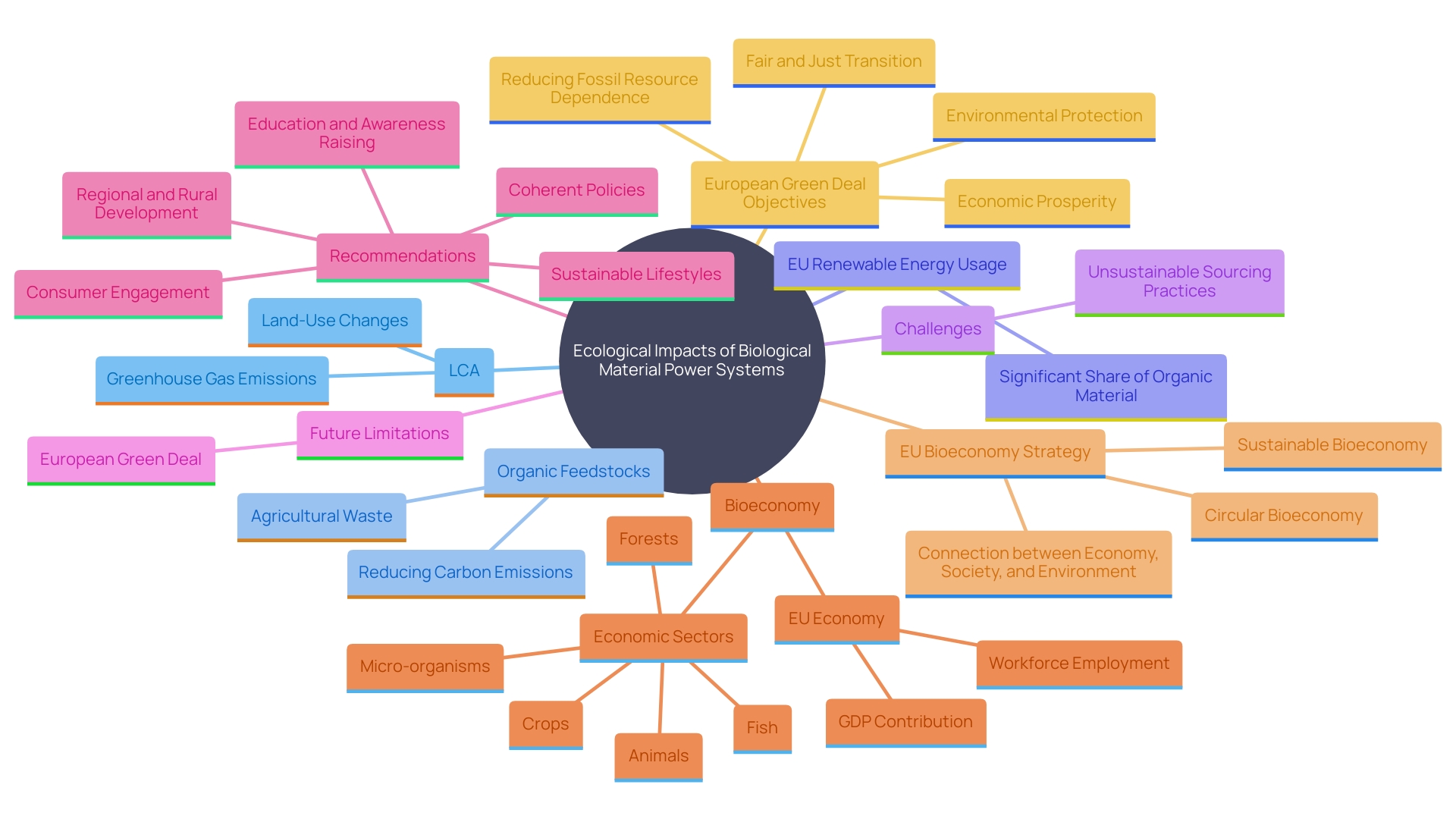
Challenges and Opportunities in Biomass Energy Production
Despite the promising potential of organic material energy systems, several critical challenges persist. These include variability in feedstock, logistical issues in collection and transportation, and competition with food production. Tackling these challenges requires creative solutions, like creating specialized organic material supply chains and enhancing conversion technologies.
Integrated biorefineries offer a substantial opportunity by utilizing various organic materials to produce a diverse range of products, including biofuels, biochemicals, and biomaterials, enhancing both economic viability and sustainability. The Office of Science has been crucial in tackling these urgent challenges, highlighting the significance of creating a bioeconomy as a circular economy to facilitate the expansion of organic solutions without environmental risks.
The rise in the utilization of solid organic materials, especially wooden resources, throughout EU Member States to generate biofuel emphasizes the transition towards sustainable power. In 2021, organic matter represented over fifty percent of the EU's renewable total final power usage. However, scientific research warns that the future availability of EU-sourced biomass may not be sufficient to fulfill the European Green Deal's roles, underscoring the need for sustainable management practices.
'Furthermore, the commercialization of second-generation biofuels has demonstrated advancement through pilot and demonstration projects using agricultural and forestry residues, along with crops such as corn stover and wheat straw.'. These efforts, backed by financial incentives from North American governments, aim to reduce greenhouse gas emissions, improve resource security, and promote sustainable alternatives.
The bioeconomy also offers opportunities for economic growth while addressing climate change by replacing fossil carbon resources with bio-based carbon resources. This transition is crucial for achieving carbon neutrality and supporting rural economies, particularly in areas like California, where wood waste management is essential for reducing wildfires and supporting local economies.
Overall, the integration of innovative technologies and management practices in biomass energy systems is critical to overcoming existing challenges and maximizing the potential benefits for both the economy and the environment.
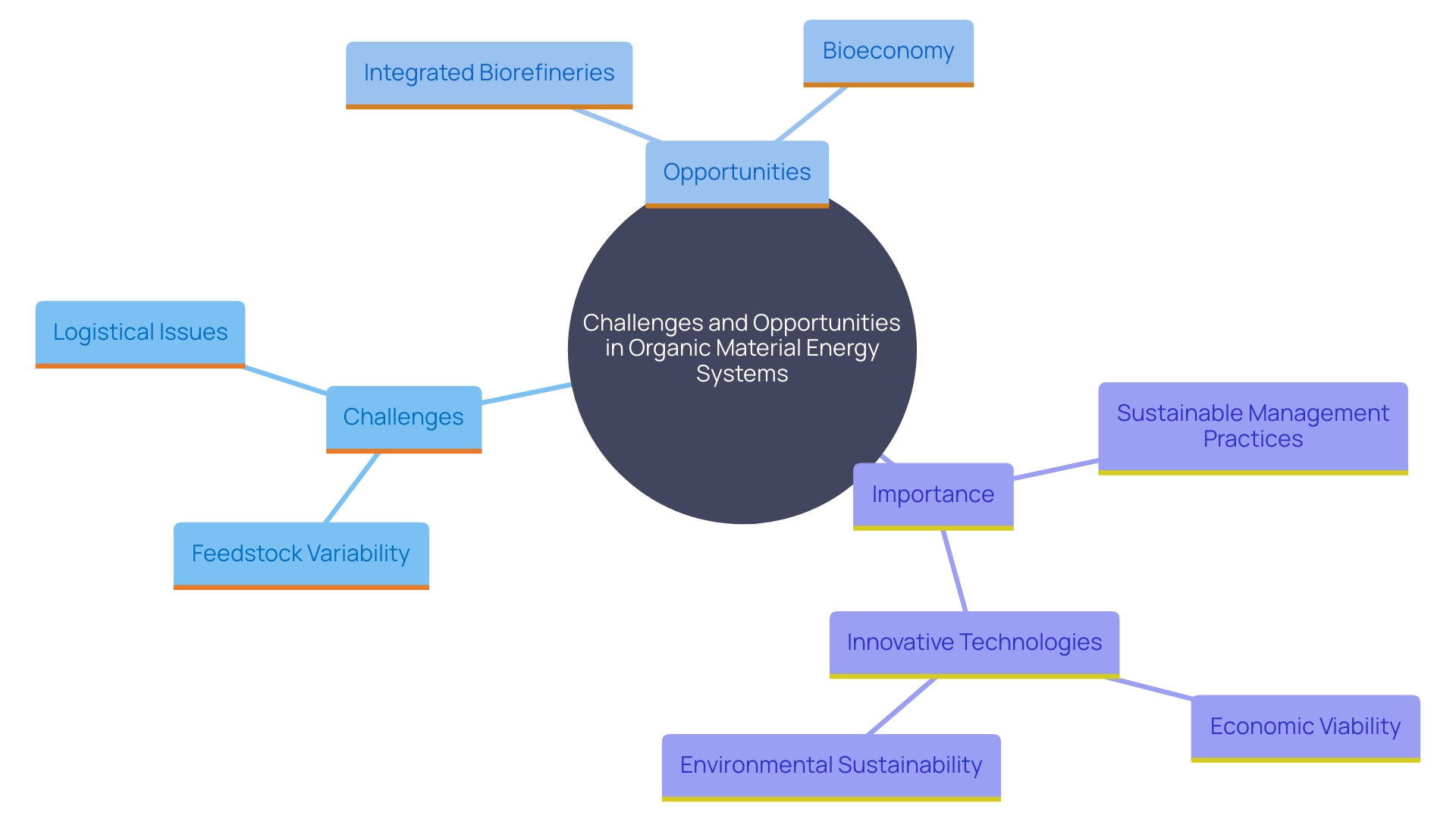
Conclusion
Understanding the complexities of biomass composition and its implications for biofuel production is essential for optimizing renewable energy systems. The analysis of various feedstocks reveals significant differences in their structural components, such as cellulose, hemicellulose, and lignin, which directly affect conversion efficiencies. Advanced analytical techniques, including NMR and GC-MS, have proven invaluable in uncovering the intricate details of biomass structure, thereby enabling informed decisions regarding feedstock selection.
The case studies presented illustrate the tangible benefits of using agricultural residues, such as corn stover and rice husks, in bio-oil production, highlighting the necessity of tailored approaches to maximize yield and sustainability.
The environmental impact of biomass energy systems cannot be overstated. Life Cycle Assessments underscore the potential for biomass to reduce greenhouse gas emissions when sourced and managed sustainably. However, challenges such as feedstock variability, logistical constraints, and competition with food production require innovative solutions and strategic planning.
The role of integrated biorefineries emerges as a promising pathway, as these systems can leverage diverse biomass sources to produce a variety of products, enhancing both economic viability and environmental sustainability.
As the demand for renewable energy continues to grow, the sustainable management of biomass resources becomes increasingly critical. The ongoing development of second-generation biofuels and the promotion of a circular bioeconomy are essential steps toward achieving carbon neutrality and supporting rural economies. By addressing the challenges and seizing the opportunities within biomass energy production, the industry can significantly contribute to a cleaner, more sustainable future.




